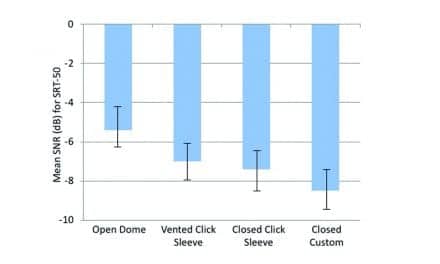Summary: A study from Michigan Medicine’s Kresge Hearing Research Institute involved enhancing auditory processing in mice and study findings supported a hypothesis on the cause of hidden hearing loss in humans.
Key Takeaways:
- Supranormal Hearing: Increasing neurotrophin-3 levels in young mice led to enhanced auditory processing capabilities beyond normal hearing levels.
- Hidden Hearing Loss Hypothesis: Mice with fewer inner ear synapses had more difficulty detecting brief silent gaps, supporting the link between synapse density and hidden hearing loss in humans.
- Potential Therapies: Findings suggest therapies that increase or regenerate synapses could improve hearing and potentially address neurodegenerative disorders involving synapse loss.
A study from Michigan Medicine‘s Kresge Hearing Research Institute was able to produce supranormal hearing in mice, while also supporting a hypothesis on the cause of hidden hearing loss in humans.
The researchers had previously used similar methods—increasing the amount of the neurotrophic factor neurotrophin-3 in the inner ear—to promote the recovery of auditory responses in mice that had experienced acoustic trauma, and to improve hearing in middle-aged mice.
Further Reading: Synapse Breakdown Accelerates Age-related Hearing Loss
This study is the first to use the same approach in otherwise healthy young mice to create improved auditory processing, beyond what’s naturally occurring.
“We knew that providing Ntf3 to the inner ear in young mice increased the number of synapses between inner hair cells and auditory neurons, but we did not know what having more synapses would do to hearing,” says Gabriel Corfas, PhD, director of the Kresge Institute, who led the research team. “We now show that animals with extra inner ear synapses have normal thresholds—what an audiologist would define as normal hearing—but they can process the auditory information in supranormal ways.”
The resulting paper, “From hidden hearing loss to supranormal auditory processing by neurotrophin 3-mediated modulation of inner hair cell synapse density,” was published in PLOS Biology.
About the Paper
As in previous studies, the researchers altered the expression of the Ntf3 to increase the number of synapses between inner hair cells and neurons.
Inner hair cells exist inside the cochlea and convert sound waves into signals sent—via those synapses—to the brain.
This time, however, two groups of young mice were created and studied: one in which synapses were reduced, and a second—the supranormal hearing mice—in which synapses were increased.
“Previously, we have used that same molecule to regenerate synapses lost due to noise exposure in young mice, and to improve hearing in middle-aged mice, when they already start showing signs of age-related hearing loss,” says Corfas. “This suggests that this molecule has the potential to improve hearing in humans in similar situations. The new results indicate the regenerating synapses or increasing their numbers will improve their auditory processing.”
Both groups of mice underwent a Gap-Prepulse Inhibition test, which measures their ability to detect very brief auditory stimuli.
For this test, the subject is placed in a chamber with a background noise, then a loud tone that startles the mouse is presented alone or preceded by a very brief silent gap.
That gap, when detected by the mouse, reduces the startle response. Researchers then determine how long the silent gap needs to be for the mice to detect it.
Mice with fewer synapses required a much longer silent gap. That result supports a hypothesis about the relationship between synapse density and hidden hearing loss in humans.
Hidden hearing loss describes a difficulty in hearing that cannot be detected by standard testing.
People with hidden hearing loss may struggle to understand speech—or discern sounds in the presence of background noise. And results of the Gap-Prepulse Inhibition test had been previously shown to be correlated with auditory processing in humans.
A Surprising Find – Synapses and Hidden Hearing Loss
Less expected, however, were the results of the subjects with increased synapses.
Not only did they show enhanced peaks in measured acoustic brainstem response, but the mice also performed better on the Gap-Prepulse Inhibition test, suggesting an ability to process an increased amount of auditory information.
“We were surprised to find that when we increased the number of synapses, the brain was able to process the extra auditory information. And those subjects performed better than the control mice in the behavioral test,” Corfas says.
Hair cell loss had once been believed to be the primary cause of hearing loss in humans as we age.
Now, however, it’s understood that the loss of inner hair cell synapses can be the first event in the hearing loss process, making therapies that preserve, regenerate, and/or increase synapses exciting possible approaches for treating some hearing disorders.
“Some neurodegenerative disorders also start with loss of synapses in the brain,” Corfas says. “Therefore, the lessons from the studies in the inner ear could help in finding new therapies for some of these devastating diseases.”
Featured image: Dreamstime





